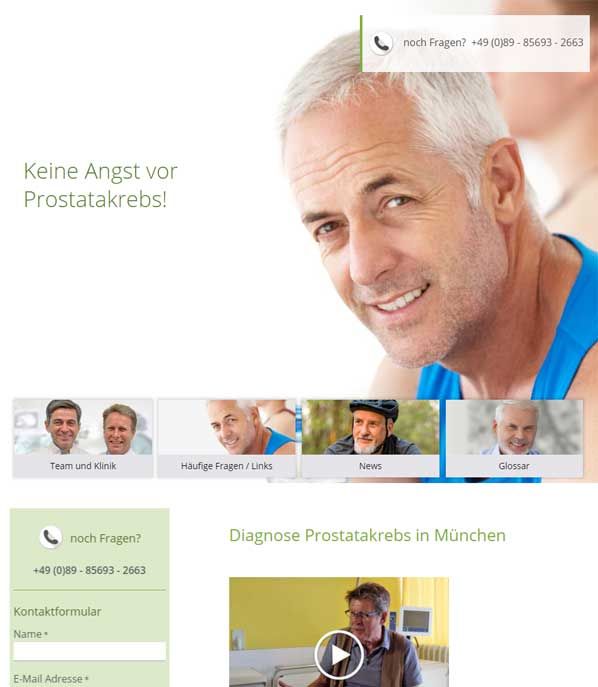Benign prostate enlargement
Synonyms: Benign prostatic hyperplasia, lower urinary tract syndrome (LUTS), adenoma
What is benign prostate enlargement?
The prostate of a healthy adult male weighs about 20 grams and is the size of a chestnut. Size and weight remain approximately constant up to the age of 45. The enlargement of the prostate that then begins in many men (sometimes up to five times the initial weight) is a normal part of the aging process and does not necessarily cause discomfort or problems. The growth process is probably triggered by a shift in the hormonal balance of the aging man. An exact cause has not yet been sufficiently researched.
Since the prostate is surrounded by a tough skin, newly formed tissue expands mainly inwards towards the urethra and narrows it (see figure). Consequently, the constriction soon leads to the typical problems with urination, although the actual increase in the size of the gland may be comparatively small.
If, on the other hand, the glandular tissue increases mainly in the peripheral areas of the prostate, the urethra is not narrowed, or is hardly narrowed, at all. Despite a massive increase in volume, the patient may remain symptom-free for a long time.

An enlarged prostate presses on the bladder and urethra. This makes it increasingly difficult for the bladder to empty.
What symptoms can occur?
The first symptoms are often only noticed when the urethra is compressed to such an extent that the bladder becomes slack. This leads to typical changes during urination: A distinction is made between disturbances in urinary bladder emptying ("urinating") and in urinary bladder storage ("bladder control").
1. Urinary bladder emptying disorder:
- Delayed start of emptying and need for abdominal pressure to empty the bladder: Those affected often stand at the toilet for several minutes.
- Attenuated urine stream: The urine only comes in portions or drips for a long time.
- Residual urine sensation: After urinating, those affected go to the toilet again because they are unsure whether they have completely emptied the bladder.
- Acute urinary retention: In advanced cases, the bladder is unable to empty in response to the patient’s wish. Patients find themselves acutely unable to urinate.
2. Bladder control disorders:
- Frequent urination: Those affected need to frequently go the toilet, in some cases at very short intervals, but pass only small quantities of urine.
- Nocturia (or nycturia): Frequent nocturnal toilet visits as a result of incomplete bladder emptying.
- Imperative urge to urinate / urge incontinence: The raising of the bladder floor due to prostate enlargement leads to overstretching of the nerves and thus to a sudden strong urge to urinate, which in some cases can lead to unwanted urine leakage.
What are the possible consequences?
Depending on the nature and severity of the prostate enlargement, there may be different consequences:
- Frequent cystitis: If there is too much residual urine in the bladder, bacteria can multiply very easily.
- Overflow incontinence: The overstretched bladder can no longer hold the urine; constant urine dripping is the result.
- Haematuria (visible blood in the urine): Pressing strongly to empty the bladder leads to increased pressure in the bladder and thus to the bursting of bladder veins.
- Diverticula of the urinary bladder: Due to the increased bladder pressure, which is necessary for complete emptying of the bladder, a thickening of the wall of the bladder occurs, sometimes with protrusions of the mucous membrane of the bladder (diverticulum). This fosters both residual urine formation as well as the growth of bladder stones.
- Hydronephrosis: In the late stage, urine can build up right back into the kidneys, leading to kidney failure which will require dialysis if left untreated.







